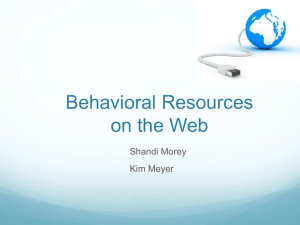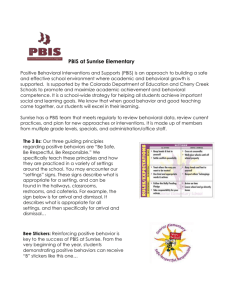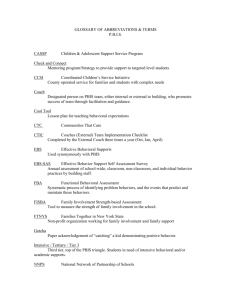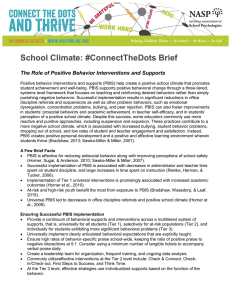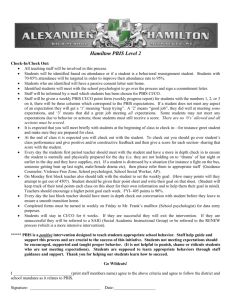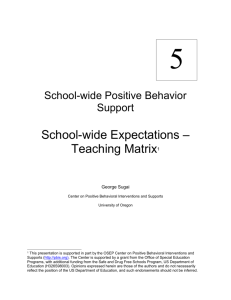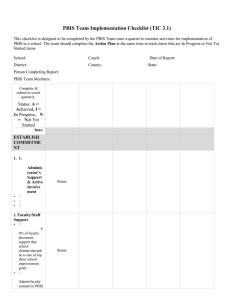Positive Behavioral Intervention and Supports
advertisement
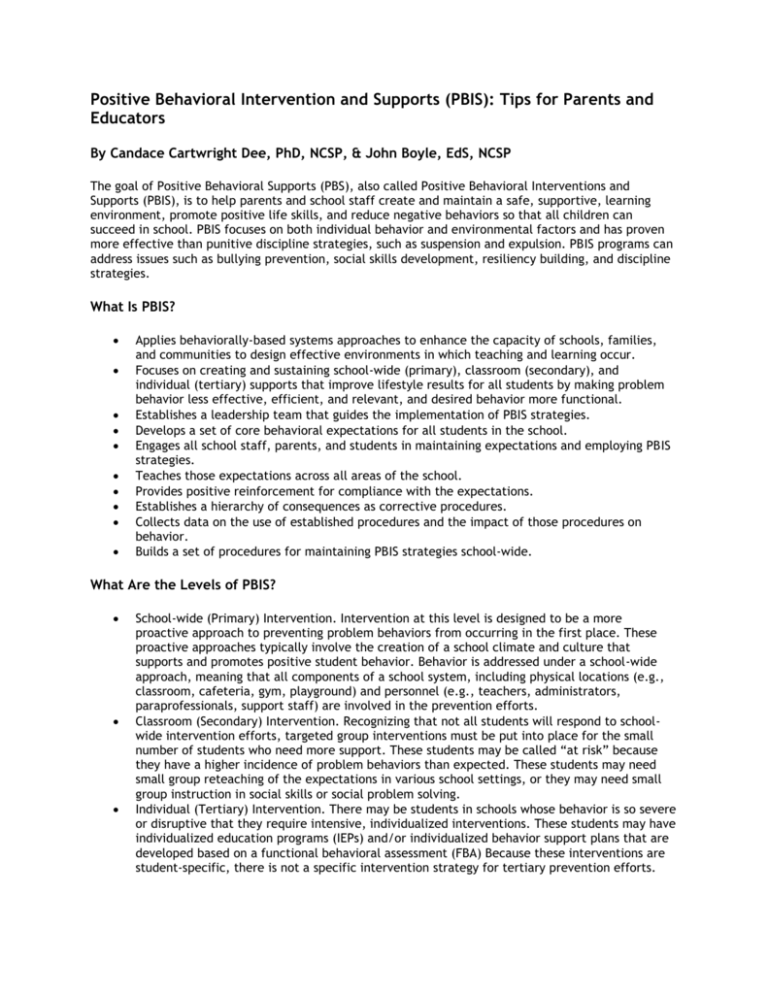
Positive Behavioral Intervention and Supports (PBIS): Tips for Parents and Educators By Candace Cartwright Dee, PhD, NCSP, & John Boyle, EdS, NCSP The goal of Positive Behavioral Supports (PBS), also called Positive Behavioral Interventions and Supports (PBIS), is to help parents and school staff create and maintain a safe, supportive, learning environment, promote positive life skills, and reduce negative behaviors so that all children can succeed in school. PBIS focuses on both individual behavior and environmental factors and has proven more effective than punitive discipline strategies, such as suspension and expulsion. PBIS programs can address issues such as bullying prevention, social skills development, resiliency building, and discipline strategies. What Is PBIS? Applies behaviorally-based systems approaches to enhance the capacity of schools, families, and communities to design effective environments in which teaching and learning occur. Focuses on creating and sustaining school-wide (primary), classroom (secondary), and individual (tertiary) supports that improve lifestyle results for all students by making problem behavior less effective, efficient, and relevant, and desired behavior more functional. Establishes a leadership team that guides the implementation of PBIS strategies. Develops a set of core behavioral expectations for all students in the school. Engages all school staff, parents, and students in maintaining expectations and employing PBIS strategies. Teaches those expectations across all areas of the school. Provides positive reinforcement for compliance with the expectations. Establishes a hierarchy of consequences as corrective procedures. Collects data on the use of established procedures and the impact of those procedures on behavior. Builds a set of procedures for maintaining PBIS strategies school-wide. What Are the Levels of PBIS? School-wide (Primary) Intervention. Intervention at this level is designed to be a more proactive approach to preventing problem behaviors from occurring in the first place. These proactive approaches typically involve the creation of a school climate and culture that supports and promotes positive student behavior. Behavior is addressed under a school-wide approach, meaning that all components of a school system, including physical locations (e.g., classroom, cafeteria, gym, playground) and personnel (e.g., teachers, administrators, paraprofessionals, support staff) are involved in the prevention efforts. Classroom (Secondary) Intervention. Recognizing that not all students will respond to schoolwide intervention efforts, targeted group interventions must be put into place for the small number of students who need more support. These students may be called “at risk” because they have a higher incidence of problem behaviors than expected. These students may need small group reteaching of the expectations in various school settings, or they may need small group instruction in social skills or social problem solving. Individual (Tertiary) Intervention. There may be students in schools whose behavior is so severe or disruptive that they require intensive, individualized interventions. These students may have individualized education programs (IEPs) and/or individualized behavior support plans that are developed based on a functional behavioral assessment (FBA) Because these interventions are student-specific, there is not a specific intervention strategy for tertiary prevention efforts. A Role for Parents Parent involvement in all aspects of their child’s educational planning is often the key to the success of the child. When parents are actively involved in the educational activities of their children, the children are more successful in school. This is particularly true when there are behavioral concerns. Parent communication with the school and participation in school activities can provide academic and behavioral support as well as help develop a healthy school climate. How can parents help? Work to develop a positive school climate. Participate on the leadership team. Help teach your children the importance of school-wide expectations at home, at school, and in the community. Volunteer in school activities. Support with teaching of and reinforcement of expectation in home and community settings. Help with school efforts to advertise the program to the community. Work to gather community resources (earn funds, canvas local merchants for participation) for creating and maintaining the program. Take part in the instruction and reinforcement systems if our child is part of a classroom or individual intervention program. Celebrate your child’s successes.


